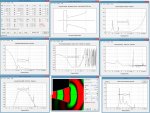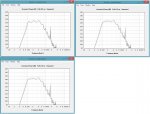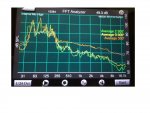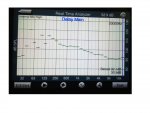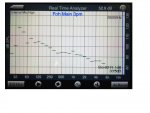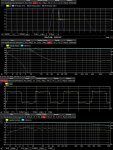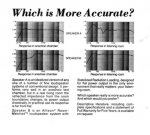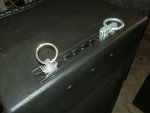Re: New DIY Mid High
I do agree that it is funny how many talk about a flat response-but it is not just the lows that are "altered".
Often a hole is cut in the midrange and sometimes the highs are rolled off.
So the result is FAR from flat-but they talk about how "flat" it is.
I I would argue "Flat-as measured how?" Different measurement systems. parameters etc can come up with different responses.
It is more of a term that people who don't know better "throw out" to seem as if they know what they are talking about-so they can try ot impress others who know even less.
Just like a lot of audio terms such as: combfiltering, line array loses over distance vs point and shoot cabinets (I don't use the term point source-because most (not all) of the cabinets that are called that are not even close to a point source and don't have anything in common with a point source , -3dB freq response, arrayability and cabinet angles, pattern control and on and on------------
The number of 25-30 is Genre specific. Not all Genre has that much but most "pop styles" have at least 15dB greater need for the lows that mid/highs.I’m sure you're a 100% correct … but WOW that MUCH BASS! I knew you guys over the other side of the big pond like a lot of bass, but …. 30dB more !!!!
What I find interesting is that so many people argue for a flat frequency response, the flatter the better, yet they "hay-stack" the sub frequencies. I typically see 10dB or more.
]
I do agree that it is funny how many talk about a flat response-but it is not just the lows that are "altered".
Often a hole is cut in the midrange and sometimes the highs are rolled off.
So the result is FAR from flat-but they talk about how "flat" it is.
I I would argue "Flat-as measured how?" Different measurement systems. parameters etc can come up with different responses.
It is more of a term that people who don't know better "throw out" to seem as if they know what they are talking about-so they can try ot impress others who know even less.
Just like a lot of audio terms such as: combfiltering, line array loses over distance vs point and shoot cabinets (I don't use the term point source-because most (not all) of the cabinets that are called that are not even close to a point source and don't have anything in common with a point source , -3dB freq response, arrayability and cabinet angles, pattern control and on and on------------

